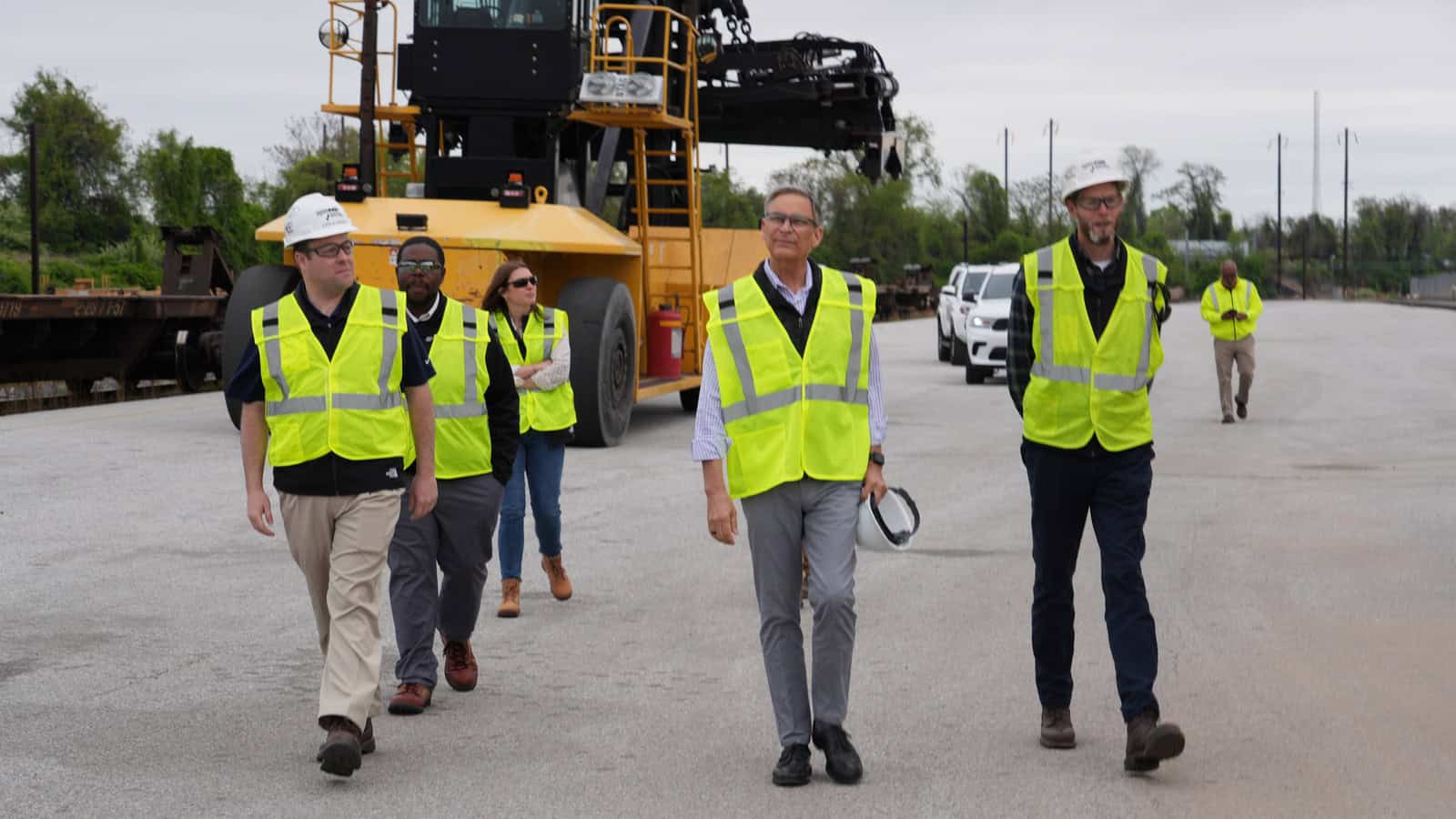Business Operations
Norfolk Southern Pivots to Serve Customers After Bridge Collapse

It’s been nearly a month since a cargo ship hit the Francis Scott Key Bridge in Baltimore, Maryland, resulting in six deaths, the destruction of the bridge and the shuttering of an important East Coast port.
- But thanks to hard behind-the-scenes work by Norfolk Southern railway since the accident, customers aren’t feeling the supply chain pinch the way they otherwise would.
What happened: NAM President and CEO Jay Timmons, along with an NAM delegation, visited the Port of Baltimore last Friday to tour Norfolk Southern’s operations there. The port is the largest for vehicle shipping in the U.S. and was the 17th biggest in the nation by total tonnage in 2021.
- On March 26, the day the Singapore-flagged Dali cargo vessel hit the Key Bridge, Norfolk Southern—which moves 7 million carloads of cargo annually—began strategizing ways to support increased shipping volumes on behalf of its customers. And it’s been doing that ever since.
- “We often say the weight of the world moves on rail … and it’s true,” Norfolk Southern Chief Marketing Officer and NAM board member Ed Elkins told the NAM during the site visit. “Our ability to serve the market through temporary disruption is really a demonstration of our strategy in action, where we leverage the experience of our railroaders and the strength of our franchise to find a Better Way to provide safe, reliable service.”
Quick adaptation: Norfolk Southern’s strategy for adapting to the closure of Baltimore’s port has included:
- The launch early this month of a dedicated new service to move freight between the ports of New York and New Jersey and Baltimore’s Seagirt Marine Terminal;
- The facilitation by the railway’s Triple Crown Services Inc.—a door-to-door East Coast truckload transit network—of a dedicated intermodal service for cargo owners who require door-to-door service;
- The use of “Go Teams,” groups of employees ready for rapid response service and created by Norfolk Southern during the pandemic; and
- Regional collaboration with the Port of Virginia to leverage service points including the Virginia Inland Port and others.
Reopening: The Port of Baltimore could be back to full functionality by the end of May, the U.S. Army Corps of Engineers said earlier this month.
- “The NAM will stay in close coordination with our members regarding supply chain impacts stemming from the collapse of the Francis Scott Key Bridge,” said NAM Director of Transportation, Infrastructure and Labor Policy Max Hyman. “We also remain engaged with leading federal officials on recovery efforts and will continue to support critical infrastructure projects such as the Port of Baltimore.”
